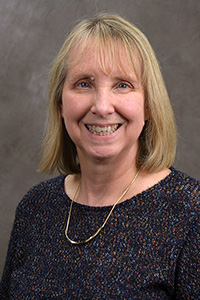
Trudi Jacobson is Distinguished Librarian Emerita at the University at Albany, SUNY.
The just-published book Metaliteracy in a Connected World: Developing Learners as Producers (ALA Neal Schuman, 2022) makes strong connections between metaliteracy, open pedagogy, and examples of open pedagogy, with student editing of Wikipedia an exemplar. I co-authored the book with Thomas P. Mackey, Professor of Arts and Media at SUNY Empire State College.
The conception of learners as producers strongly aligns with the goals of the Wiki Education program. By editing Wikipedia articles, students have the opportunity to move from their traditional role as information consumers to an active and engaged learning model involving informed contributions to the global Wikipedia community.
Jako Olivier, UNESCO Chair on Multimodal Learning and Open Educational Resources and Professor of Multimodal Learning at North-West University in South Africa, writes in his foreword, “The focus on metaliterate producers in the classroom prompts associations with constructivist ideals where learners actively construct meaning and knowledge in the learning process. In an age where digital content is central as learning resources, the need for metaliteracy is becoming increasingly relevant” (p.xi). Metaliteracy, like editing on Wikipedia, also highlights the need for responsible and ethical participation in today’s interconnected environment.
Metaliteracy originally developed in the age of participatory online culture to go beyond the primarily skills-based approaches to teaching and learning in social information environments. Metaliteracy provides an overarching conception of literacy that emphasizes domains of learning, learner roles and characteristics, and goals and learning objectives that express a more engaged and ethical involvement with online and in-person communities. The idea of metaliterate learner as producer is a core pillar of metaliteracy, as explored in the first chapter in the book, which sets the scene for the following chapters by giving readers a rich understanding of the framework, firmly situating it within learning theory and pedagogical models. The second chapter focuses on how multimodal learning can engage students in their roles as producers.
Chapter three delves into open pedagogy and how metaliteracy can provide crucial scaffolding for the new, exciting, and sometimes anxiety-inducing scenario where students are asked to move beyond more traditional learning situations. It first introduces core concepts related to open education, looks at open pedagogy from students’ perspectives, and then moves on to the impact of open education on teaching and learning. In this chapter, the authors show how ”metaliteracy provides a comprehensive scaffolding and framework for the learning, and indeed the teaching, that takes place in open pedagogical environments” (p. 85).
Following this exploration of the connections between open pedagogy and metaliteracy, chapter four examines three courses that advance the goal of learners as producers. The first case study involves a course that is built around the Wiki Education program. It weaves together Wikipedia editing, metaliteracy, and several frames from the ACRL Framework for Information Literacy for Higher Education. Wiki Education instructors may find metaliteracy’s scaffolding to be of particular interest, as it can be used regardless of course topic or student level. In this chapter, telling quotes from students provide a view into how they feel about this linkage.
The metaliteracy website provides a host of open learning resources for a wide range of educational settings, as well as other information about the metaliteracy framework.
Inspired to teach with Wikipedia by the book’s case study? Visit teach.wikiedu.org for more information on Wiki Education’s support.
Image credits: Jfhughesus, CC BY-SA 4.0, via Wikimedia Commons; Illustrated by Jasmina El Bouamraoui and Karabo Poppy Moletsane, CC0, via Wikimedia Commons
